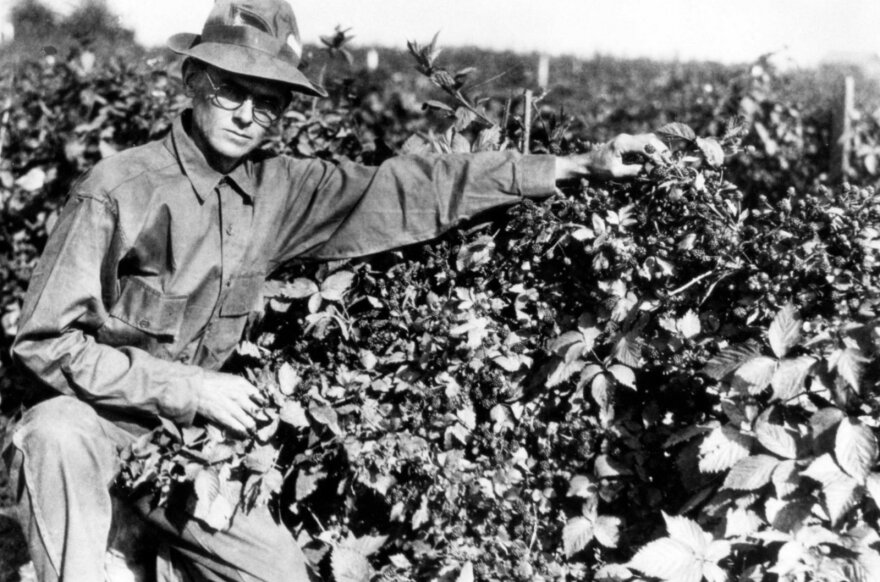People think of Disneyland as America’s first and original theme park. But that would be Knott’s Berry Farm, in nearby Buena Park, even if Walter and Cordelia Knott didn’t charge admission for decades.
America’s earliest amusement parks were picnic areas where, after long, hard days, working people gathered to eat, make music, and enjoy life. These evolved into “pleasure gardens,” in the European style, landscaped grounds with more complex diversions—concerts, carnivals, zoos—and, finally, into destinations like Coney Island.
Knott’s Berry Farm was famous first for Cordelia Knott’s fried chicken dinners and—surprise!—fresh, delicate, delectable berries. Boysenberries combined features of the European blackberry, European raspberry, loganberry, and American dewberry. Walter Knott successfully grew and popularized them during the Great Depression, with a little help from his wife’s pies and preserves.

Most likely a cross between an Eastern dewberry and loganberry, scientists say,
the boysenberry’s history is a mystery. Writing in the L.A. Times, “fruit detective” David Karp speculates that what may have been a seedling bred by Luther Burbank ended up at John Lubben’s Napa County farm, dubbed the lubbenberry.
Farming prunes for Lubben, Rudolph Boysen also crossed blackberries and raspberries. When he moved to Anaheim in 1923, Boysen brought berry plants with large, delicious berries. Encouraged by George Darrow of the USDA, a respected Maryland berryman, Walter Knott successfully grew the mystery berry—naming it after Boysen—and launched a legend.
PS: If you crave boysenberries just listening to this, look for them in late May to early June at farmers’ markets and fruit stands. Or grow your own. Rudolph Boysen descendants sell the original berries—and berry plants—at their u-pick Boysen Berry Farm in Orland.
Back at Knott’s Berry Farm, celebrating its centennial year: The family farm slowly developed into a big, boisterous monument to the American spirit. Walter Knott built the earliest diversions to amuse people while they waited for their fried chicken and boysenberry pie. In 1968 the Knotts decided to fence the park and charge $1 admission.

The wholesomeness of Knott’s Berry Farm endures, from Ghost Town and the penny arcade to Camp Snoopy and increasingly thrilling thrill rides.
And Knott’s events are deeply woven into Southern California culture. Such as Knott’s Merry Farm over the holidays, and truly scary Knott’s Scary Farm and Halloween Haunt, after dark in October—big kids only, trust me. Pop-culture celebrities are fading fast at the Scary Farm. Elvira, Mistress of the Dark, the campy vamp who got her start hosting bad horror films on local TV, took her final bow in 2017. But new “scary zones” help make up for it. Get special event tickets well in advance.
Up the Road Encourages Responsible, Safe Travel
Here are previous Up the Road episodes that explore why we should travel, why we should travel close to home, and how to travel responsibly in the shadow of COVID-19. Take a listen:
- Up the Road: Why Travel?
- Up the Road: Why Travel in Northern California
- Up the Road: How to Travel
- Up the Road: Why Local Travel Matters
- Up the Road: Travel That’s Not About You
- Up the Road: Heading Up the Road Again—Responsibly
- Up the Road: 2020 Travel Strategy
- Up the Road: More on Responsible Travel 2020





